Podcasts are a great authentic resource for Spanish teachers, but how do we use podcasts in Spanish class, especially when they seem too fast or too advanced? We fear that podcasts would require too much work on the teacher’s part to make comprehensible. That’s not always the case! Take a look at my tips for how to use podcasts in Spanish in your classroom today!
Where to find podcasts in Spanish?
There are so many podcasts in Spanish, and they range in proficiency levels! That is good news for Spanish teachers. I am an avid podcast listener, and also a Google addict. So, naturally, I love using Google Podcasts to find all of my podcasts. But, you can use any app like Spotify, Apple Podcasts, Stitcher, or others. Once, you’re there, you can search “Spanish,” but be prepared to be overwhelmed by thousands of options. For a list of 5 podcasts in Spanish to use with your students (for all levels & themes), check out this blog post! I narrowed down my favorite podcasts for school.
7 Tips for Using Podcasts in Spanish Class
1. Slow down the speed
Our students are not accustomed to hearing a variety of native speakers or listening activities without images or video. So, podcasts will be challenging for them. On podcast apps, you have the ability to slow down the audio speed (or speed it up!). This is a great way to differentiate if students listen on their own. I recommend at least bringing the speed down to .75 so they have more processing time.
2. Pre-teach new vocabulary and content
Always pre-teach new vocabulary and content that students will encounter in the podcast. This means that you need to really give the podcast a few good listens first. Pull out the most used vocabulary and main idea. To save time, if you have the transcript of the podcast, copy and paste the text into Voyant Tools, a free website. This will analyze the entire text for you and make a word cloud of the most commonly used words. And that’s not all Voyant Tools can do! It really dissects the text, readability, and context of each word.
It is also a good idea to give your students a synopsis of the podcast prior to listening. This will help students focus and give a purpose for listening. Share images and screenshots of similar articles/information prior to listening so they can visualize and relate to the content first.
3. Chunk the podcast
You will especially want to chunk lengthy podcasts. It can be daunting and overwhelming to listen to an entire podcast in a second language. Students may only be able to handle a few minutes at a time, and that is perfectly fine. Build up their stamina so they are gradually able to handle more and more.
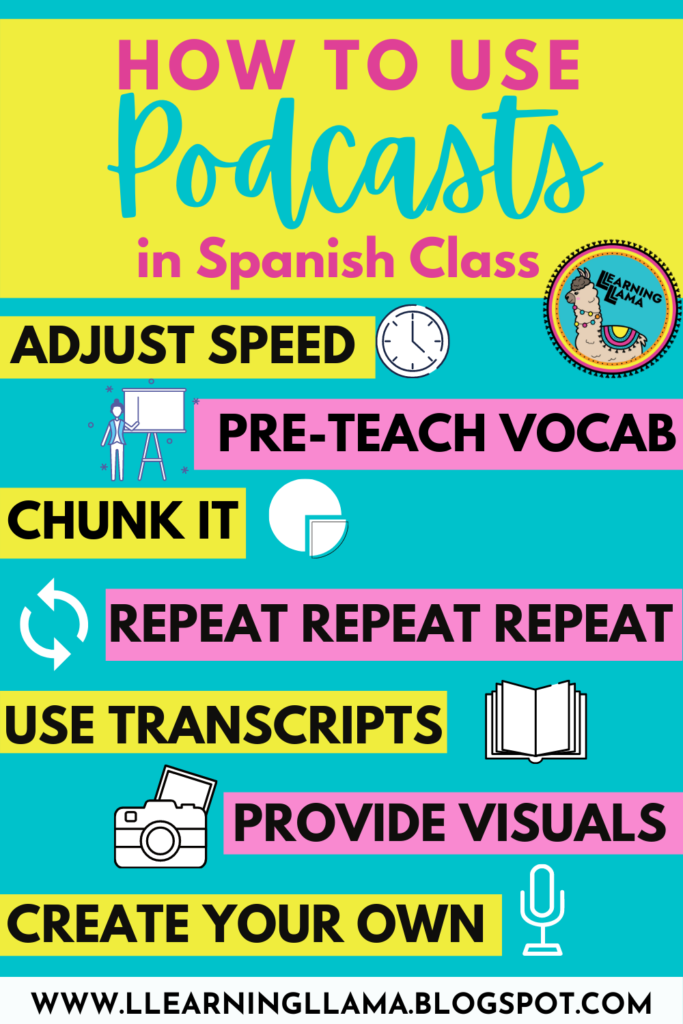
4. Repeat, repeat, repeat
Don’t be afraid to repeat. Think back to when you were learning the target language. Hearing a native speaker recording once was never enough! You may find yourself spending one entire class period repeating just one small chunk of the podcast. Each time you repeat it, have students listen for a specific purpose. The first time, they should just be listening and following along. Maybe the second time, they are writing down words that they recognized. The third time, the main idea, etc.
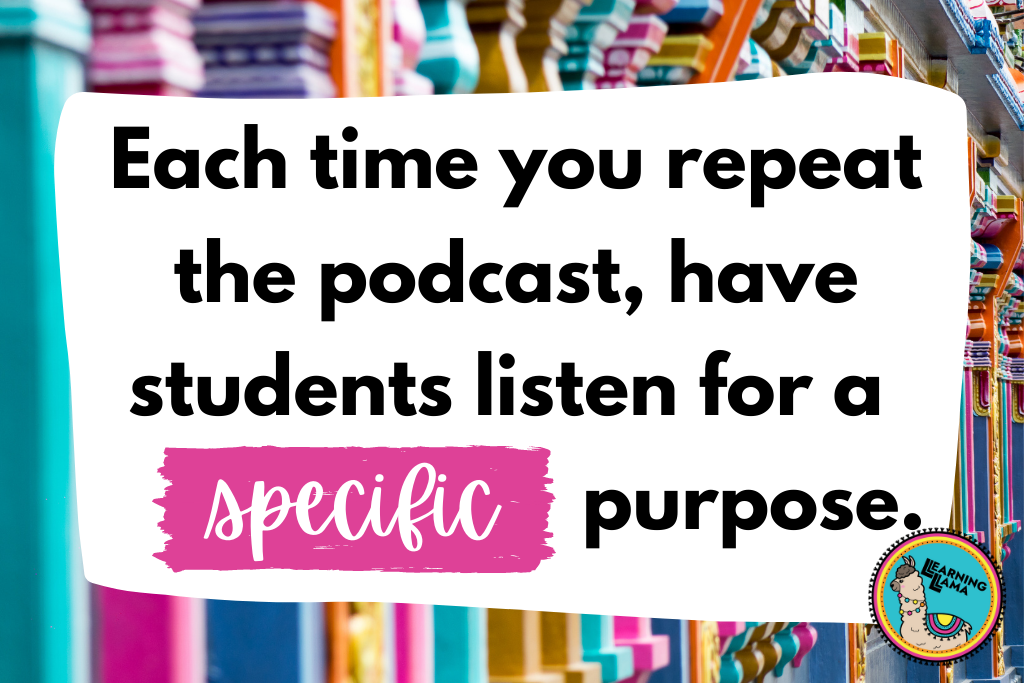
5. Use a transcript
Start your lessons with a transcript of the podcast. As you introduce podcasts to your students, allow them to reference the transcript as they listen and train their ears. Slowly, start to give transcripts less and less as they become accustomed to listening activities. And if they never outgrow the need for the transcript, that is ok! They are still in the very early stages of learning a language, and podcasts don’t have any visuals. This could be the crutch they rely on to really interpret the audio.
6. Provide visuals
In addition to transcripts, students also need visuals during listening activities. Find images that you can display and click through, aligning with the text in the audio. I recommend putting a few images on a PowerPoint presentation that you can display as they listen to the audio. Then, you can re-use the images in many ways. Students can match sentences to the images. They can write descriptions of each image, and when they are finally ready, they can retell the podcast in their own words just by looking at the images.
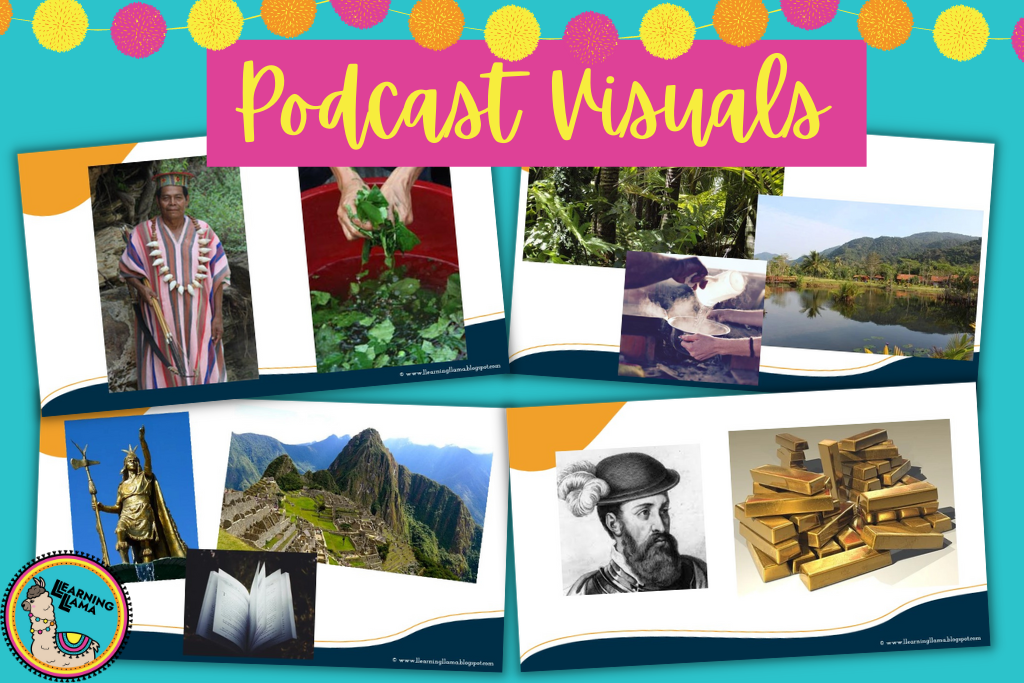
7. Podcast in Spanish Project
Students can make their own podcast. All they need is a phone (or computer) and a voice recorder app. At the beginning of the year, have students choose a topic that is of interest to them. Once a month, they can revisit this topic and create a podcast. The teacher can easily interweave communicative skills from the current unit to the project. If you’re working on transition words, make sure they incorporate some. If you are teaching past tense, students should speak in past tense. When students have choice and interest, they are more engaged. Let them pick topics like sports, food, shopping, music, etc.
I used this project with my Spanish 4 students. They created about six episodes throughout the school year, but their “podcast show” was about learning Spanish. On each episode, they talked about something we were currently learning. For example, my students recorded two podcasts based on our Global Challenges Unit. They recorded a podcast about an endangered animal, its habitat, and how we can help this animal. The second podcast for this unit was on the topic of what they would do if they were president (practicing ‘si fuera…’).
If you’re still looking for more strategies, here are some other tips for using podcasts in the classroom from Teaching as We Speak!
I’m excited to use podcasts, but need some help getting started!
If you’re looking to get started with podcasts in Spanish, but don’t know just where to start, or are in a time crunch, check out these lessons. I absolutely love the Duolingo podcasts for intermediate students. I created two detailed lessons that follow my 7 suggestions, and include fun projects for your students!
- Romeo, an endangered frog in Bolivia searching for his Juliet
- The Boiling River in Peru – an Inca legend/natural Peru wonder
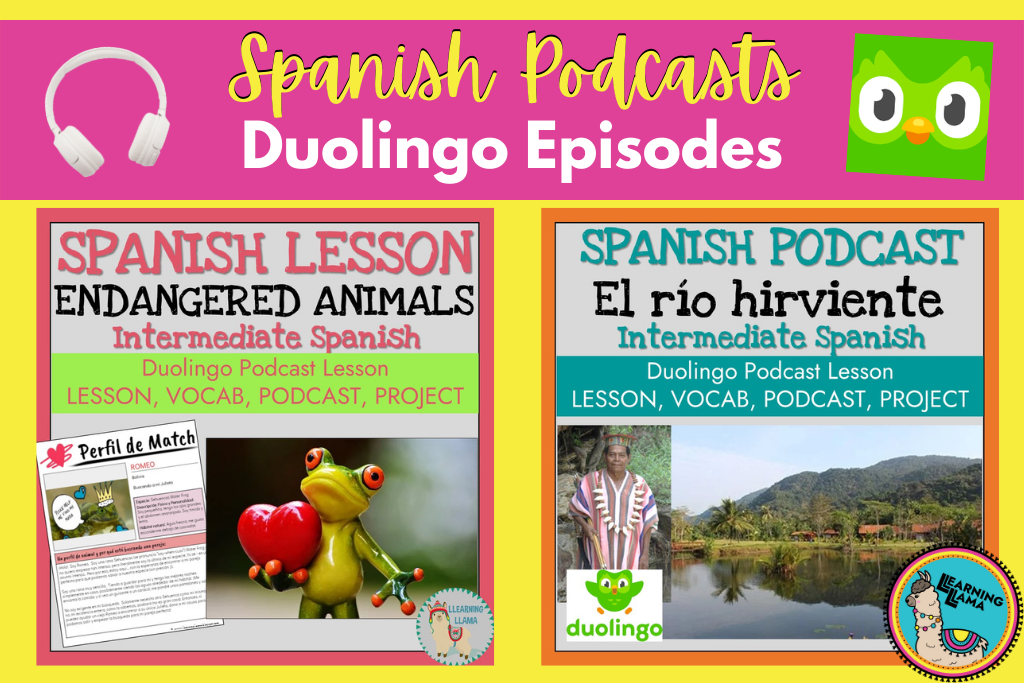
Podcasts can easily be used in your world language class if you follow these steps! Let me know what else you are doing to make podcasts in Spanish accessible for your students.

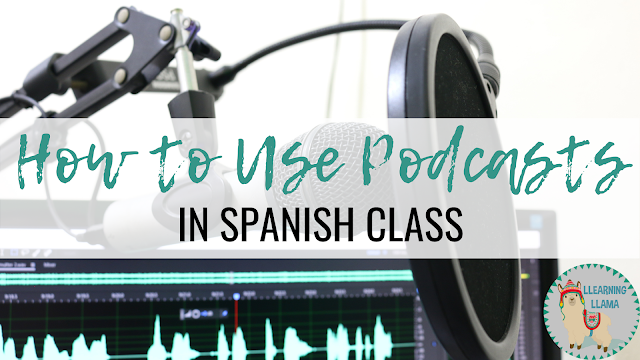




3 Responses